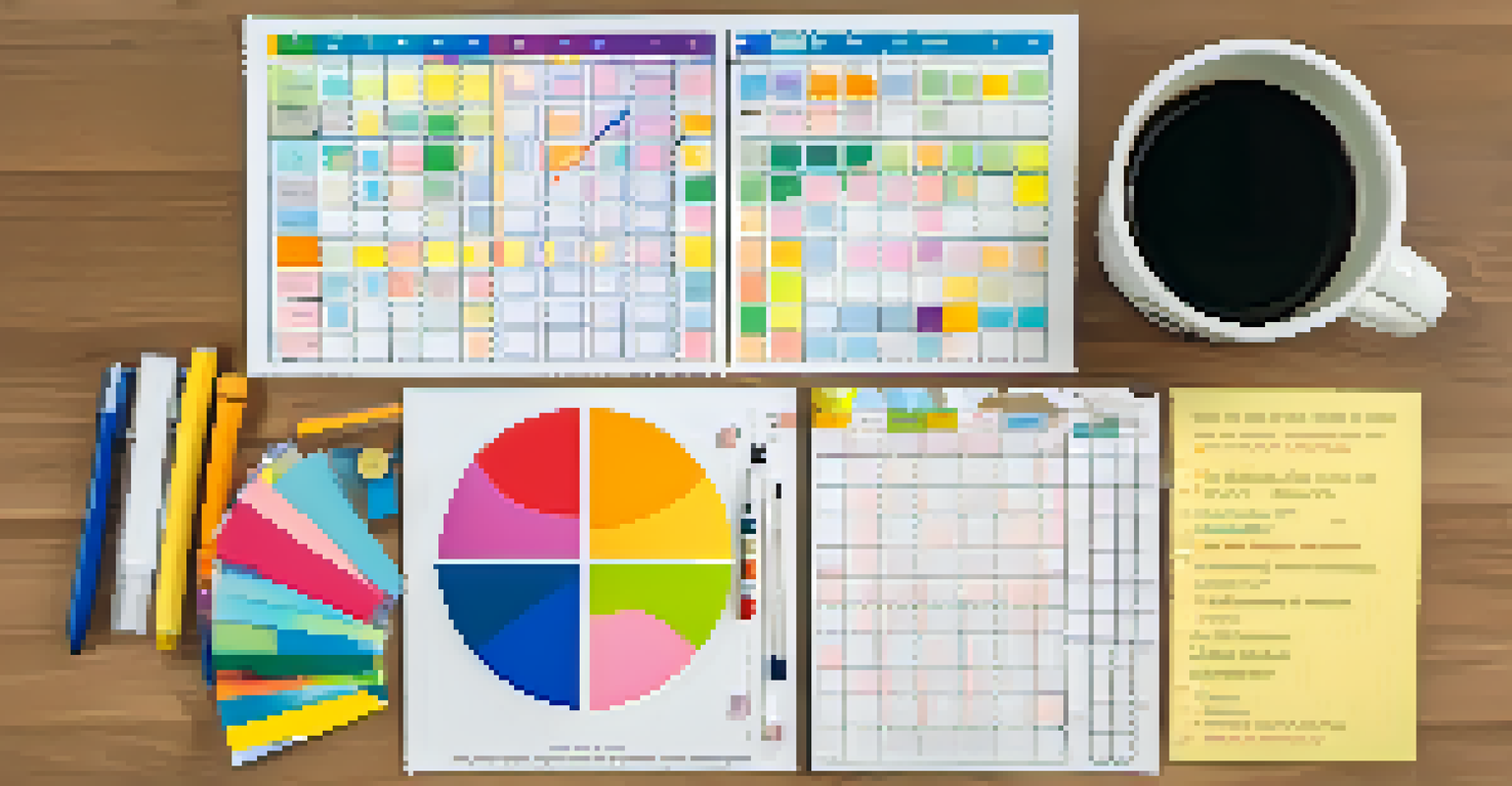Techniques to Boost Productivity through Effective Time Use

Understanding the Importance of Time Management
Time management is more than just keeping a calendar; it's about maximizing your potential. By understanding how you spend your time, you can identify areas for improvement. This awareness can lead to better control over your daily tasks and responsibilities, ultimately fostering a productive mindset.
Time management is life management.
Many people underestimate the impact of effective time management on their overall productivity. When you prioritize tasks and set clear goals, you create a roadmap for success. This helps eliminate distractions and allows you to focus on what truly matters, making your work more efficient and fulfilling.
Think of time management as a personal fitness plan. Just as you wouldn’t skip workouts to achieve your health goals, you shouldn't neglect your time management practices. Regularly assessing your time usage can lead to significant improvements in how you approach your work and life.
Setting Clear Goals for Effective Time Use
Setting clear, achievable goals is essential for boosting productivity. Goals act as a guiding star, providing direction for your daily activities. When you have specific objectives in mind, it's easier to prioritize tasks and allocate time effectively.

For instance, consider the SMART criteria: Specific, Measurable, Achievable, Relevant, and Time-bound. By framing your goals using this method, you can create a structured approach that helps you maintain focus. This clarity can significantly enhance your ability to manage time and resources wisely.
Master Time Management for Success
Effective time management enhances productivity by helping you prioritize tasks and focus on what matters most.
Imagine embarking on a road trip without a map; you'd likely waste time getting lost. Similarly, without clear goals, you may find yourself drifting through your day without purpose. So, take time to outline your objectives and watch your productivity soar.
Prioritizing Tasks with the Eisenhower Matrix
The Eisenhower Matrix is a powerful tool for prioritizing tasks based on urgency and importance. By categorizing tasks into four quadrants—urgent and important, important but not urgent, urgent but not important, and neither—you can make informed decisions about where to focus your energy.
The key is not to prioritize what’s on your schedule, but to schedule your priorities.
This method encourages you to tackle high-priority tasks first, ensuring that your time is spent on what truly matters. For example, responding to an urgent client request may fall into the first quadrant, while planning a future project might be in the second. This distinction can help prevent overwhelm and increase efficiency.
By implementing the Eisenhower Matrix, you can gain clarity on your daily responsibilities. It’s like having a personal assistant that helps you sort through the chaos, allowing you to concentrate on what drives your goals forward.
Time Blocking: Structuring Your Day for Success
Time blocking is a technique where you allocate specific blocks of time for different tasks or activities. This method helps create a structured approach to your day, minimizing distractions and making it easier to focus. By designating time slots for work, meetings, and breaks, you can enhance your productivity significantly.
For example, you might block out the first two hours of your day for deep work, followed by a 30-minute meeting, and then an hour for responding to emails. This clear structure not only helps you stay on task but also gives your brain a break between different types of work, maintaining your energy levels.
Set Clear Goals to Stay Focused
Establishing specific, achievable goals provides direction and structure, making it easier to allocate time effectively.
Think of time blocking like a recipe; it requires precise measurements and timing to create a delicious dish. When you stick to your blocks, you’re more likely to achieve your goals and finish tasks on time, making each day a success.
Leveraging the Pomodoro Technique for Focus
The Pomodoro Technique is a time management method that uses intervals of focused work followed by short breaks. Typically, you work for 25 minutes, then take a 5-minute break, with longer breaks after every four cycles. This approach not only boosts concentration but also reduces mental fatigue, keeping your mind fresh throughout the day.
For instance, if you’re tackling a challenging project, setting a timer for 25 minutes can help you dive into the task without distractions. After the timer goes off, you take a brief break to recharge, allowing your brain to process information and come back stronger for the next round.
Using the Pomodoro Technique is like sprinting in a marathon; it encourages you to pace yourself while maximizing output. By breaking your work into manageable segments, you can maintain high levels of productivity over time.
Minimizing Distractions to Enhance Focus
Distractions are productivity's nemesis. From smartphone notifications to chatty coworkers, these interruptions can derail your focus. To combat this, it's essential to identify and minimize potential distractions in your work environment.
One effective strategy is to create a dedicated workspace free from distractions. This could mean finding a quiet corner in your home or using noise-canceling headphones to block out ambient sounds. Additionally, consider using apps that limit access to distracting websites during working hours.
Minimize Distractions for Better Focus
Creating a distraction-free workspace is essential for maintaining concentration and completing tasks efficiently.
Imagine trying to read a book in a noisy café; the distractions would make it nearly impossible to concentrate. Similarly, by minimizing interruptions, you can create an environment that fosters focus and productivity, enabling you to complete tasks more efficiently.
Evaluating and Adjusting Your Time Management Strategies
Regularly evaluating your time management practices is crucial for sustained productivity. Just like a car needs routine check-ups to run smoothly, your time management strategies require assessment and adjustments. This allows you to identify what works and what needs improvement.
Consider keeping a time log for a week to track how you spend your hours. After analyzing the data, you may discover patterns that highlight areas where you can improve, such as spending too much time on low-priority tasks. Using this insight can help you refine your approach for better results.

Making adjustments is like tuning an instrument; it ensures that you’re in harmony with your goals and responsibilities. By staying flexible and open to change, you can continuously enhance your productivity and make the most of your valuable time.